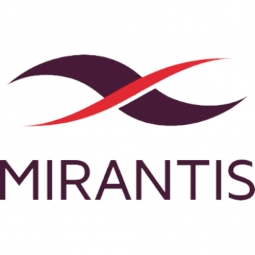下载PDF
Industry Giant Quickly Transforms Storage Service With Powerful, Flexible OpenStack Management Layer
技术
- 基础设施即服务 (IaaS) - 云计算
- 基础设施即服务 (IaaS) - 云存储服务
适用行业
- 电子产品
- 电信
适用功能
- 离散制造
- 产品研发
服务
- 云规划/设计/实施服务
- 系统集成
- 培训
挑战
EMC Corporation, a leader in foundational technologies for data storage, management, protection, and analysis, was facing challenges with its cloud management layer. The company's massively scalable storage service required a powerful management layer to provision, monitor, and manage cloud resources and transactions. However, the initial management layer's manual processes were demanding excessive staff resources due to recent customer growth. The company needed a new cloud management solution that could handle high availability, performance, and scalability. The solution also needed to be easy-to-use and highly secure. In addition, the new management layer would also be the foundation for two additional cloud services: public compute as a service coupled with the object storage service, and private cloud compute resources for EMC’s internal software development staff.
关于客户
EMC Corporation is a global leader in foundational technologies that allow businesses to store, manage, protect, and analyze data. Founded in 1979, the company has over 70,000 employees in 86 countries. EMC is helping thousands of customers transform operations, deliver IT as a service, and embrace cloud computing. For companies with massively scalable object storage needs that don’t want to build and own infrastructure, EMC is also providing high performance, scalable cloud services. With over one Exabyte of capacity in locations around the world, businesses with expanding IOT, social, and mobile operations can now turn to EMC for mission critical object storage as a service.
解决方案
EMC turned to OpenStack for a solution to their cloud management layer challenges. They conducted a small pilot using an OpenStack distribution, reference architecture, and installation tool from the Mirantis website, achieving a working pilot in just two days. They then adapted the Mirantis reference architecture to meet EMC’s unique requirements, including the addition of Cisco ASR routers and Nexus 1000 switches for virtual private network tunneling from end-points to the cloud management layer, and the Terraform tool for building, changing, and versioning infrastructure safely and efficiently. EMC also tapped Mirantis for a design review and OpenStack training. With a newly defined architecture, the Cloud Operations team was ready for production deployment of 18 compute nodes in each of its eight cloud locations. In November 2015, the team deployed the new cloud management layer and met its aggressive launch deadline.
运营影响
数量效益
相关案例.

Case Study
Remote Temperature Monitoring of Perishable Goods Saves Money
RMONI was facing temperature monitoring challenges in a cold chain business. A cold chain must be established and maintained to ensure goods have been properly refrigerated during every step of the process, making temperature monitoring a critical business function. Manual registration practice can be very costly, labor intensive and prone to mistakes.

Case Study
Cloud Solution for Energy Management Platform-Schneider Electric
Schneider Electric required a cloud solution for its energy management platform to manage high computational operations, which were essential for catering to client requirements. As the business involves storage and analysis of huge amounts of data, the company also needed a convenient and scalable storage solution to facilitate operations efficiently.

Case Study
Leveraging the IoT to Gain a Competitive Edge in International Competition
Many large manufacturers in and outside Japan are competing for larger market share in the same space, expecting a growing demand for projectors in the areas of entertainment, which requires glamor and strong visual performance as well as digital signage that can attract people’s attention. “It is becoming more and more difficult to differentiate ourselves with stand-alone hardware products,” says Kazuyuki Kitagawa, Director of Service & Support at Panasonic AVC Networks. “In order for Panasonic to grow market share and overall business, it is essential for us to develop solutions that deliver significant added value.” Panasonic believes projection failure and quality deterioration should never happen. This is what and has driven them to make their projectors IoT-enabled. More specifically, Panasonic has developed a system that collects data from projectors, visualizes detailed operational statuses, and predicts issues and address them before failure occurs. Their projectors are embedded with a variety of sensors that measure power supply, voltage, video input/ output signals, intake/exhaust air temperatures, cooling fan operations, and light bulb operating time. These sensors have been used to make the projector more intelligent, automatically suspending operation when the temperature rises excessively, and automatically switching light bulbs. Although this was a great first step, Panasonic projectors were still not equipped with any capability to send the data over a network.








